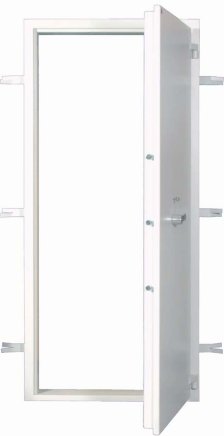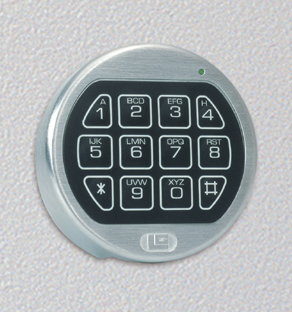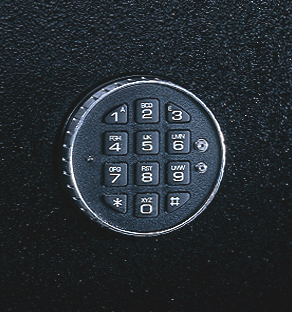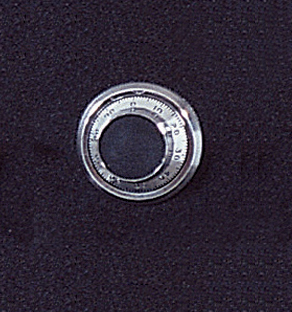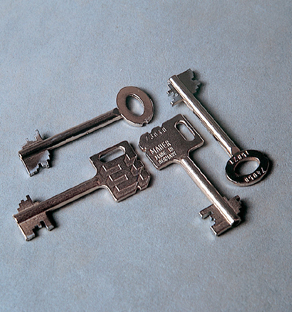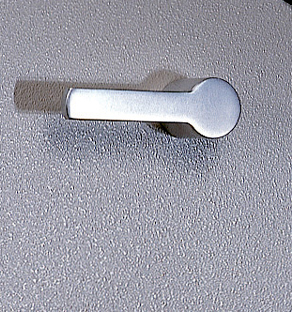Volba správného typu trezoru vám může ušetřit spoustu starostí a mnohdy i peněz. Trezor certifikovaný do nejvyšší bezpečnostní třídy vám samozřejmě poskytne výtečnou ochranu. Pokud ale hodláte ukládat například jen milované fotografie, je tato investice poněkud zbytečná. V konečném důsledku bude ale vždy záležet jen na vás.
Váš výběr bude vždy ovlivňovat několik faktorů:
- bezpečnostní třída trezoru
- typ úložky (co bude v trezoru uschováno)
- umístění trezoru (podlaha, zeď, nábytek)
- specifické vlastnosti (rozměry, ohnivzdornost atd.)
Výsledná volba je buď kombinací nebo kompromisem mezi těmito variantami.
Bezpečnost trezoru
Trezor si můžete pořídit ve variantě bez nebo s certifikací. Varianta bez certifikace (tzv. bezpečnostní schránka) bude stačit pro domácí použití (nevelká finanční hotovost) například ve formě nábytkového trezoru.
V ostatních případech se doporučuje certifikovaný trezor (dle normy ČSN 1143-1). Jednotlivé třídy se poté odvíjí od hodnoty věcí, které budou v trezoru uloženy. Vždy je ale lepší předem se poradit s pojišťovnou, u které máte nemovitost (nebo např. šperky) pojištěnou.
Následující tabulka vám poskytne hrubý přehled o bezpečnostních třídách:
| Bezpečnostní třída |
Počet zámků |
Orientační úložná částka Kč |
| třída 0 |
1 ks |
300.000 |
| třída I |
1 ks |
500.000 |
| třída II |
1 ks |
1.200.000 |
| třída III |
1 ks |
4.000.000 |
| třída IV |
2 ks |
6.000.000 |
| třída V |
2 ks |
16.000.000 |
| třída VI |
2 ks |
30.000.000 |
Speciální kategorii pak tvoří trezory na dokumenty podléhající zvláštnímu režimu. To jsou dokumenty, které jsou například považovány za tajné. Ty nejsou dominantou špiónů a tajných služeb. I menší firmy by si dokumenty (např. výzkum) měly chránit.
O certifikaci se stará vyhláška Národního bezpečnostního úřadu a trezory se podle ní dělí následovně:
| Označení |
Stupeň utajované skutečnosti |
Bezpečnostní třída |
| stupeň V |
„vyhrazené“ |
třída 0 |
| stupeň D |
„důvěrné“ |
třída 0 |
| stupeň T |
„tajné“ |
třída I |
| stupeň PT |
„přísně tajné“ |
třída II |
Co budete v trezoru uschovávat
Je asi jasné, že jinak bude vypadat trezor na zbraně a střelivo a jinak na šperky. Na peníze a cennosti vám bude postačovat menší trezor vhodný pro zabudování do nábytku nebo do stěny. Pro uskladnění dokumentů bude vhodnější volit trezor v protipožárním provedení nebo vodotěsný.
Speciální kategorii pak tvoří trezory na datové nosiče. Většina podniků totiž zcela zanedbává zabezpečení důležitých dat co se technické stránky týče.
Například:
- 90 % počítačových nosičů dat není technicky správně archivováno
- 77 % dokumentů není technicky správně uchováváno
- 73 % počítačových nosičů dat není ve výrobních podnicích chráněno proti „výrobně technickým vlivům“
- 68 % počítačových nosičů dat není v oblasti výzkumu dostatečně zabezpečeno proti zcizení a špionáži
Tato čísla jsou naprosto alarmující. Přitom je tak snadné ztrátě dat zamezit. Stačí si vybrat správný trezor nebo sejf. Investice v řádu desítek tisíc může předejít miliónovým ztrátám.
Pro ochranu dokumentů platí, že vnitřní teplota nesmí po dobu min. 60 minut překročit 150 °C, pro ochranu datových nosičů 52 °C.
Umístění trezoru
Podle umístění trezoru lze rozlišit 3 základní typy:
- nábytkový
- stěnový
- podlahový trezor
Nábytkový trezor jak z názvu vyplývá je vhodný pro zabudování nebo připevnění k nábytku. Můžete si jej dokonce pořídit i v certifikované verzi. Hlavním úkolem toho typu je odolat vypáčení.
Trezor určený pro zabudování ve stěně znáte asi z filmů, ve kterých ho milionáři schovávají za obrazem. Jednou z jeho hlavních funkcí je totiž utajit místo, kde je zabudován. S jeho umístěním by se mělo počítat již ve stádiu plánovaní stavby nebo rekonstrukce.
Trezory do podlahy jsou spíše raritou. Výhodou je skryté místo instalace. Nevýhodou je právě náročná instalace.
Specifické vlastnosti trezoru
- Váha:
Váha se může stát opravdovým limitem. Trezory jsou totiž velmi těžké předměty a ne každý nábytek či dokonce podlaha s tímto zatížením počítá. Proto je s umístěním trezoru vhodné počítat již při plánování budovy či rekonstrukce. V případě nábytkového trezoru se doporučuje vyztužit police.
- Uzamykání:
1. Klasický zámek - klasický zámek na trezorový nebo též motýlkový klíč je nejběžnější a nejjednodušší způsob zamykání trezoru. Oproti elektronickým zámkům má výhodu, že si nemusíte pamatovat kód a nehrozí tedy ani to, že se ke kódu dostane někdo nepovolaný v případě, že ho třeba máte pro jistotu poznamenaný např. v mobilním telefonu, diáři apod. Naproti tomu si musíte hlídat klíč, v případě jeho ztráty je výroba duplikátů finančně náročnější.
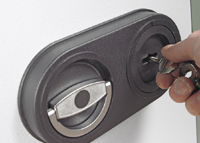
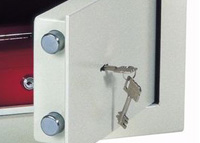
2. Digitální zámek - zámek na elektronický kód nebo též digitální zámek je v dnešní době velmi vyhledávaná forma uzamykání trezorů a sejfů. Stačí si jen pamatovat váš osobní PIN kód a nemusíte složitě nosit nebo schovávat klíč. Zde však spočívá částečně i nevýhoda, že když si někdo kód nějakým způsobem zjistí, můžete pak mít problém. U sejfů a schránek bez certifikace se dodává tzv. nouzový klíč pro případ, že kód zapomenete nebo se vybijí baterie např. z důvodu vaší dlouhodobé nepřítomnosti. K certifikovaným trezorům se z bezpečnostních důvodů nouzový klíč nedodává, ovládací panel se k trezorům i sejfům dodává ve variantách s displejem nebo bez.
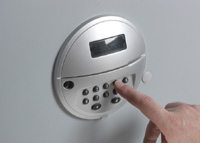
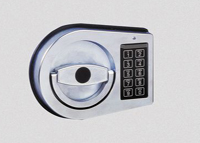
3. Elektronický kombinační zámek - elektronický kombinační zámek LaGard je sofistikovanější verze běžného elektronického zámku. Zajišťuje větší bezpečnost díky spojení moderního elektronického systému a mechanického odblokování zámku.
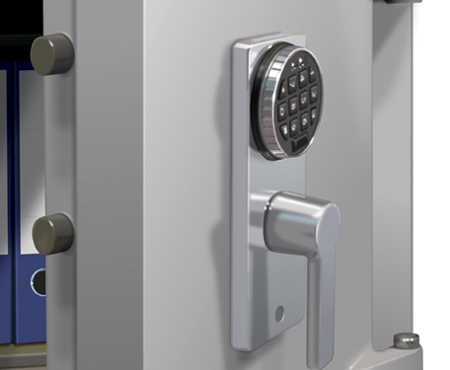
4. Mechanický kombinační zámek - mechanický kombinační zámek je další bezpečnostní varianta na přání zákazníka. Používá se hlavně u trezorů ve vyšších bezpečnostních třídách, ale lze ho i bez problémů kombinovat s jinými typy zámků pro absolutní ochranu vašich cenností a dokumentů.
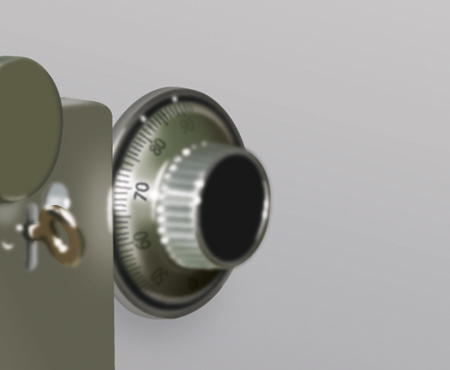
5. Zámek na otisk prstu - zámek na otisk prstu je zatím nejnovější variantou uzamykání trezorů, zatím se však vyrábí v omezené míře pouze u sejfů a schránek bez certifikace. Ověřování biometrických údajů znamená budoucnost v zabezpečení přístupu do trezorů a sejfů. Budeme se tak častěji setkávat s čtečkami otisků prstů a v budoucnosti například i se skenerem sítnice. To je ovšem ještě opravdu vzdálená budoucnost.
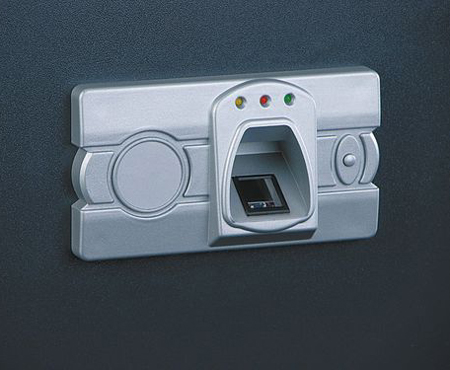
- Objem trezoru:
Výběr musí být tímto kritériem zcela jistě ovlivněn. Dobře si před koupí promyslete, co budete v trezoru uchovávat. Trezory na dokumenty již například počítají s ukládáním běžných šanonů a tak si vnitřek již nemusíte přeměřovat.
Pokud by vám nestačil „standardní“ trezor, existuje možnost si pořídit trezorové dveře a proměnit tak celou místnost na opravdu velký trezor.

Doufáme, že vám náš malý průvodce pomohl na cestě k větší bezpečnosti vašich cenností.
One of the basic criteria for choosing a safe is always its security expressed by the safety class of the safe. In the Czech Republic, the inclusion of a safe in a security class is based on two standards, namely the Czech standard ČSN 916012 and the European standard EN 1143-1.
Standard EN 1143-1 regulates the safety of safes in those cases where higher requirements are placed on the safety of safes. According to this standard, seven safety classes are distinguished. The basic security level of safes is governed by the ČSN 916012 standard, which distinguishes a total of three levels of security.
Security classes of safes according to the EN 1143-1 standard:
There are a total of seven safety classes, designated 0 to VI. A label on the inside of the door, which is firmly attached, usually with rivets, informs the interested party about how the safes are classified in the relevant category. Certificates on the inclusion of the safe in the security class are issued by certified laboratories that have gone through the certification process and have the appropriate knowledge and skills. The classification of safes is the same throughout the European Union. When classifying safes, testing laboratories carry out tests and forceful opening of the safe.
Used tools and time are taken into account for evaluating the safe. The rating of the safe is expressed as a resistance value expressed in RU (resistance units). The higher the number of RUs, the higher the resistance and protection of the safe against burglary.
Vaults are always classified according to the lowest measured resistance. Breaking the protection of the safe takes the form of either manual opening, then it is a so-called partial break-in, or breaking the door, i.e. a so-called full break-in. The test results are then converted to the RU value.
For a better orientation in the classification of security classes, we present indicative deposit amounts in CZK. In order to determine the relevant financial deposit amount, however, a consultation with the relevant insurance company is always necessary. In order to meet the safety requirements and classify the safe in a given class, it is necessary to observe the proper anchoring of the safe in the wall or in the floor or walling of wall safes, which is always indicated in the attached instructions.
Security class 0 for vaults:
Lowest number of locks: 1
Lowest required security lock class: A
Approximate storage amount: CZK 300,000
Resistance units: RU (30/30)
Safety class I for safes:
The lowest number of locks: 1
The lowest required security lock class: A
Approximate storage amount: CZK 500,000
Resistance units: RU (30/50)
Safety class II for safes:
Lowest Number of Locks: 1
Lowest Required Security Lock Class: A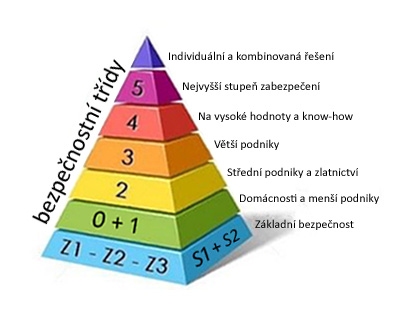
Approximate storage amount: CZK 1,200,000
Resistance units: RU (50/80 )
Safety class III for safes:
The lowest number of locks: 1
The lowest required security lock class: B
Approximate storage amount: CZK 4,000,000
Resistance units: RU (80/120)
Safety class IV for safes:
The lowest number of locks: 2
The lowest required security lock class: B
Approximate storage amount: CZK 6,000,000
Resistance units: RU (120/180)
Safety class V for safes:
The lowest number of locks: 2
The lowest required security lock class: B
Approximate storage amount: CZK 16,000,000
Resistance units: RU (180/270)
Safety class VI for safes:
Minimum number of locks: 2
Indicative deposit amount: CZK 30,000,000
Security classes of safes according to the ČSN 916012 standard:
The safety of safes can be further assessed according to the ČSN 916012 standard, which is intended for the classification and testing of mobile safes with basic security according to their resistance to burglary, which are not addressed by the EN 1143-1 standard.
Safety class Z1 for safes:
Resistance units: RU (10/10)
Lowest number of locks: 1
Lowest lock class: A
Intended for, e.g.: storing a weapon, storing things for the time of your absence, etc. .
Safety class Z2 for safes:
Resistance units: RU (15/20)
Lowest number of locks: 1
Lowest lock class: A
Intended for e.g.: storing medicines, poisons, documents, weapons and cash in CZK 30,000
Safety class Z3 for safes:
Resistance units: RU (20/25)
Lowest number of locks: 1
Lowest lock class: A
Intended for, e.g.: storage of documents, medicines, poisons, up to 10 pieces of weapons and cash up to CZK 50,000
Security classes S1 and S2 for safes:
Safety classes "S" according to the EN 14450 standard are not actually safety classes of safes, but of safes, metal boxes and tin cabinets. The manufacturer of safes often has one of their products certified in this class so that they can offer clients a certified product, but there is not much to say about security. It is stated more or less only for the good feeling of the user that he has a certified product.
